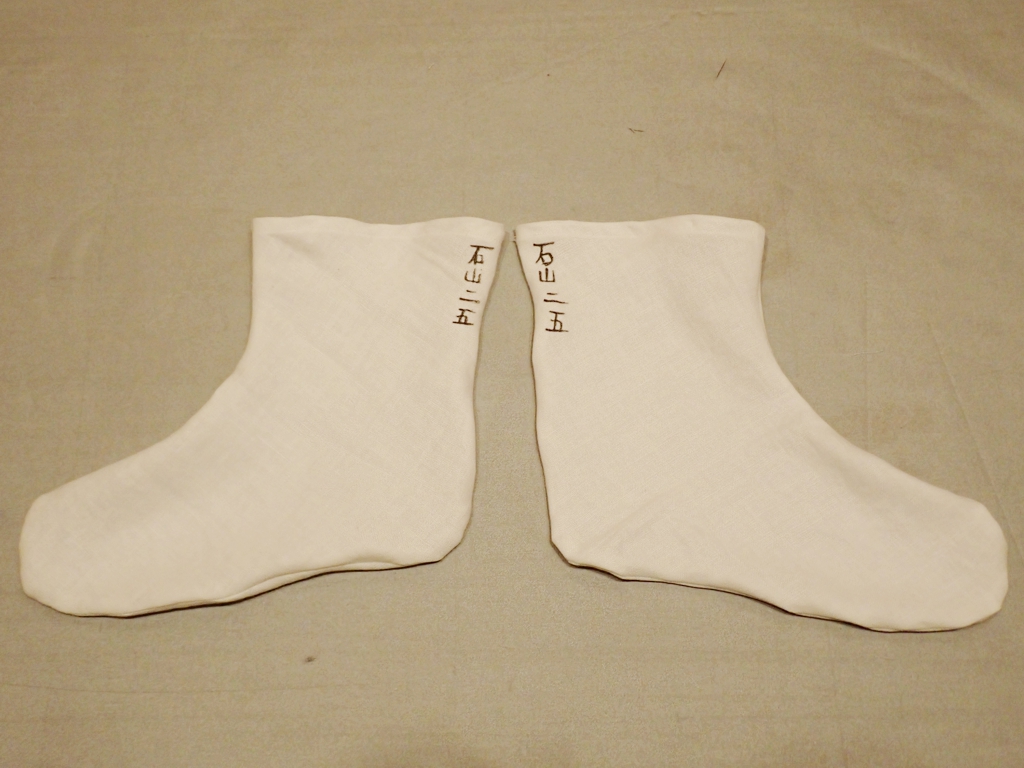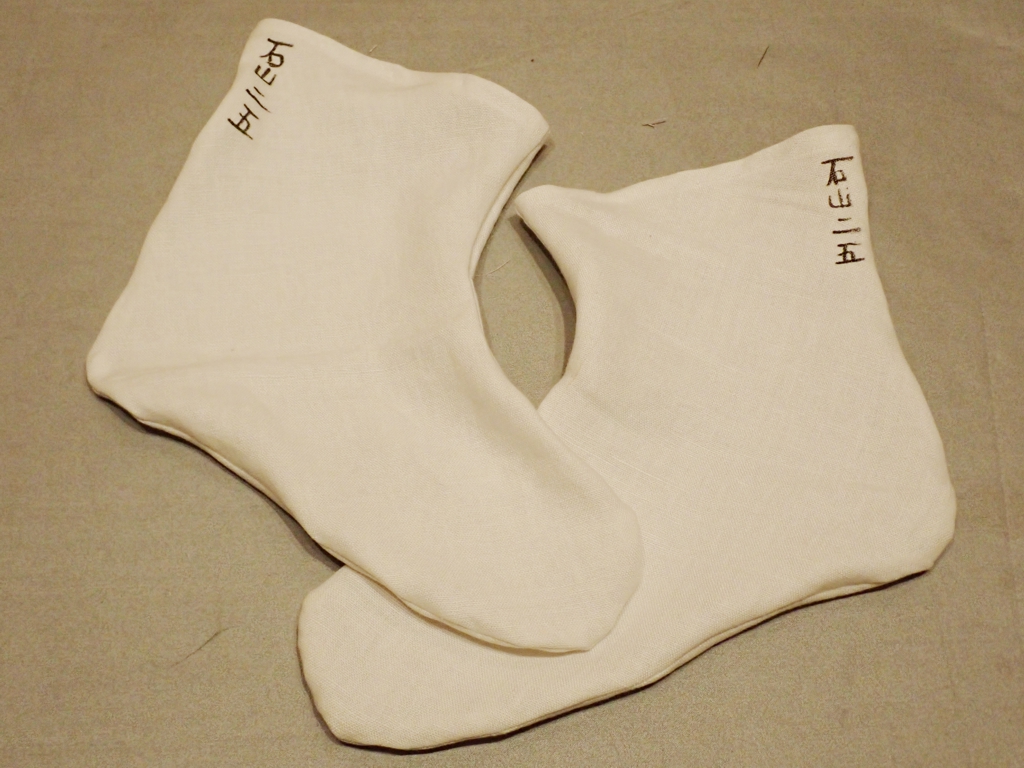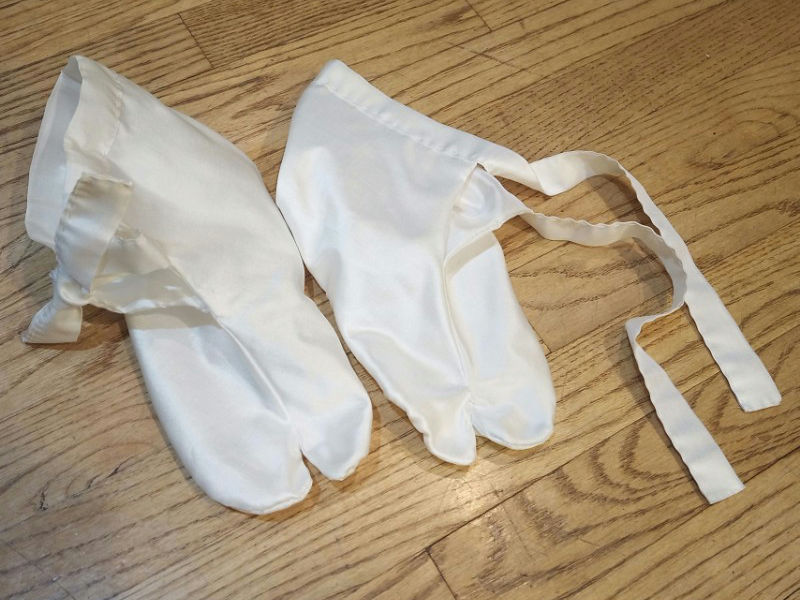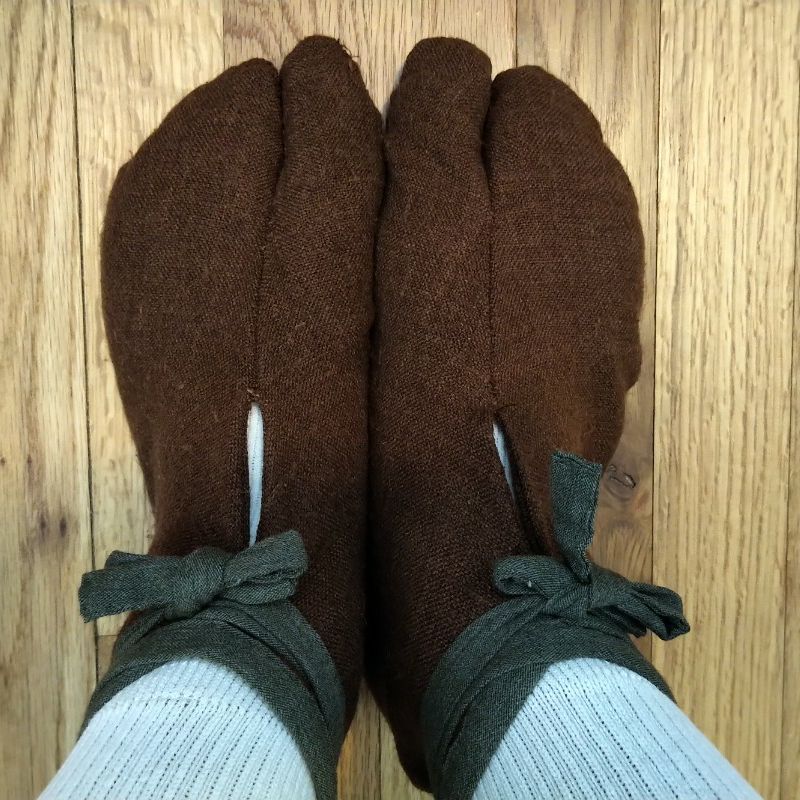The next step in the long running Bunkan Sokutai Sugata project, I’m working my way down to the feet. When wearing the sokutai, asagutsu shoes (really more like clogs) protect the feet from the ground, and shitozu socks protect the feet from the asagutsu (or is it the other way around?). Apparently, they pre-date the split-toe and the idea that walking on a seam all day will cause blisters.
Mine are based on this one in the Shoso-in Imperial Treasure Repository:
I traced the photo in a drawing package, scaled it up to the size of my foot, printed the pattern, cut two pieces from surplus cotton canvas, sewed them together, everted the sock, and tried it on. Too tight. Modify the pattern a bit and iterate. Still too tight. Iterate. Success! That was actually pretty rapid for this kind of thing.
Now that I had a working pattern, it was time to cut four pieces and make the final copy out of white linen. A couple of cuff hems, and some decoration with a fabric marker, and they are ready to wear once I finally make the asagutsu. According to the Shoso-in site, the original bears the seal of “Tōji-kōin”, and if you visit the page to view the back there appears to be writing up near the cuff. It’s probably something like “worn on the occasion of his birthday” or something. I wrote “Ishiyama 2 5” on mine. If I ever make a real seal I’ll stamp them.






